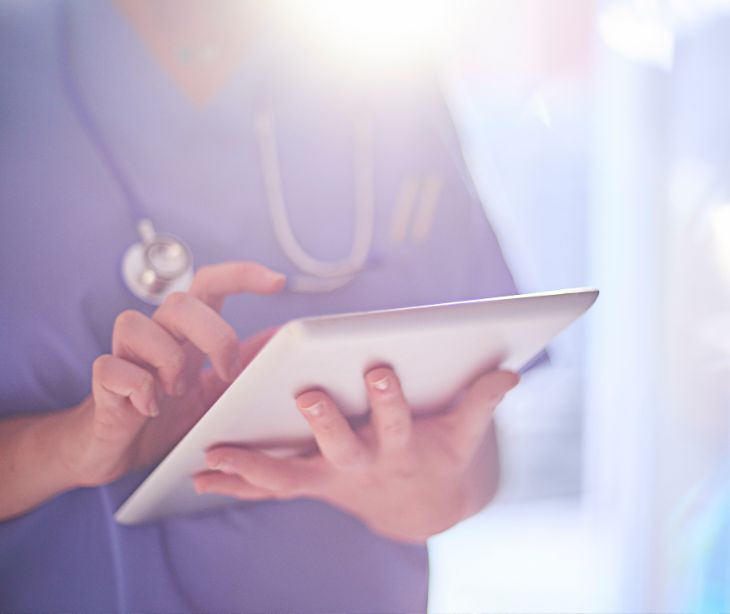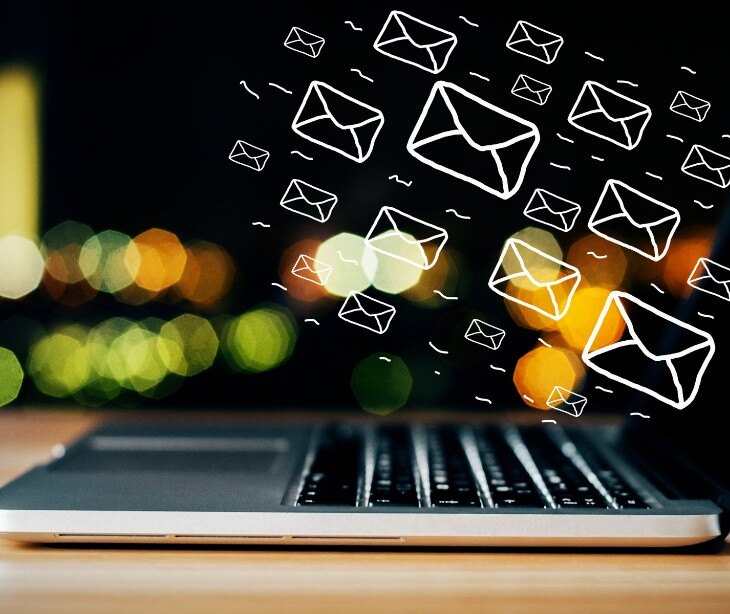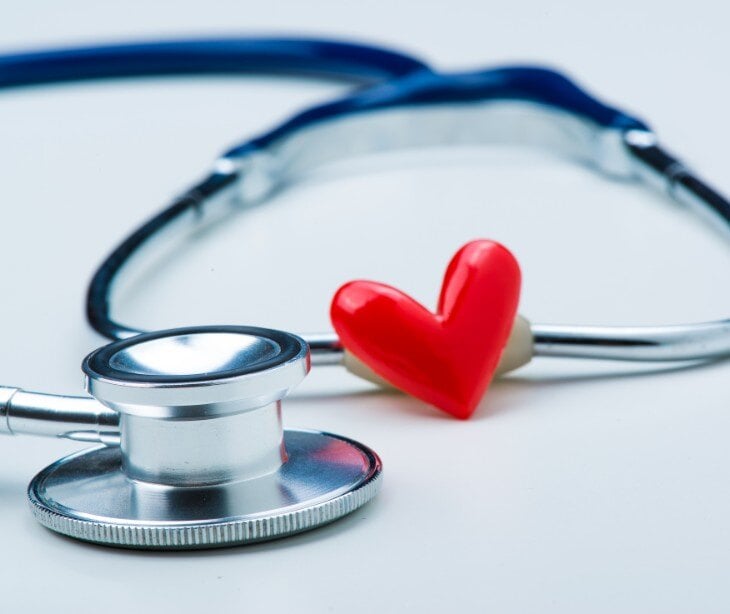
Email has transformed healthcare communication, improving collaboration and patient engagement. Secure, compliant platforms enable digital transformation and patient-centered care.
The widespread adoption of email in healthcare
According to Redpoint Global, 80% of patients prefer using digital channels for communication with healthcare providers. The digital-first communication that emerged during the COVID era set a new expectation, and it is now considered standard for healthcare experiences going forward. But why email?
Recent statistics show that 92% of Americans possess an active email account, with almost half checking their inbox multiple times every day—as opposed to only 80% that text, and the percentages for social media users (72%) or smartphone owners (85%). Email has gained widespread acceptance, even among older generations and underprivileged populations.
See also: Leveraging social media platforms for HIPAA compliant patient outreach
Cross-generational use of email
Despite differences in technological proficiency and communication preferences across generations, email serves as a universal communication tool in healthcare, catering to healthcare professionals' and patients' diverse needs and preferences. Here's how email usage manifests across different age groups:
- Baby boomers (born 1946-1964): Email is a familiar and dependable mode of communication for many baby boomers. They utilize email to communicate with colleagues, reach out to patients, and access crucial information like appointment reminders and test results. While some may still prefer face-to-face interactions or phone calls, email provides a convenient alternative for asynchronous communication.
- Generation X (born 1965-1980): Generation X professionals effortlessly incorporate email into their daily routines, using it for internal communication, patient correspondence, and administrative tasks. They value the efficiency and convenience that email offers, enabling seamless communication across departments and specialties without being restricted by time or location.
- Millennials (born 1981-1996): Millennials are enthusiastic about using email, yet they prioritize efficiency and prefer streamlined communication methods. They often combine email with instant messaging platforms and collaboration software to organize patient care, collaborate with colleagues, and interact with patients. Email serves as just one of the many tools in their digital toolkit, providing versatility and easy accessibility.
- Generation Z (born 1997-2012): While Generation Z individuals are comfortable using email, they may gravitate toward more interactive and visually engaging communication platforms. While email remains essential for professional communication in healthcare, younger members of this generation may lean towards text-based messaging or video conferencing for quicker and more personalized interactions.
Overcoming generational barriers
Even though different generations may use email differently, healthcare organizations must ensure that email remains easy to use and accessible for everyone involved. Here's how they can achieve this:
- Training and education: Providing training and support to healthcare professionals of all ages to enhance their email proficiency and familiarity with digital communication tools.
- User-centric design: Designing email interfaces and platforms with user experience in mind, incorporating intuitive navigation, mobile responsiveness, and accessibility features.
- Multichannel communication: Offering alternative communication channels alongside email, such as secure messaging platforms and telehealth solutions, to cater to different generational preferences and communication styles.
- Customization and personalization: Tailoring email communications to individual preferences and needs, such as providing options for frequency of updates, language preferences, and content relevance.
See also: Causes of language barriers in healthcare
Accessibility
The familiarity of email interfaces makes it easy for patients to navigate, retrieve, and store important health information without the need to learn a new platform.
Intuitive user interface
Email interfaces are designed to be user-friendly, with intuitive layouts and navigation menus that are familiar to users of all ages and technological backgrounds. Patients can easily navigate their email inbox, folders, and settings without facing steep learning curves or complex interfaces. This simplicity and consistency contribute to a seamless user experience, enabling patients to access and manage their health information effortlessly.
Universal accessibility
Email interfaces are universally accessible across a wide range of devices and operating systems, including smartphones, tablets, laptops, and desktop computers. Patients can access their email accounts from any device with an internet connection, ensuring continuity of access regardless of their preferred platform. This universal accessibility eliminates barriers to entry and empowers patients to retrieve important health information on the device of their choice, whether they're at home, at work, or on the go.
Familiar interaction patterns
Patients are accustomed to the interaction patterns and conventions commonly found in email interfaces, such as reading, composing, replying to, and forwarding messages. These familiar actions make it easier for patients to navigate and engage with health-related emails, reducing mental effort. Whether they're looking for specific information, saving important messages, or marking items for later, patients can use their existing understanding of email functions to effectively manage their health information.
Organizational tools and features
Email interfaces offer a variety of organizational tools and features that enable patients to categorize, prioritize, and archive health-related messages for easy retrieval. Patients can create custom folders, labels, or tags to organize their inboxes according to topics such as appointments, test results, medication reminders, and educational resources. Additionally, features like search functionality, filters, and sorting options further enhance the ability to locate specific messages and information efficiently.
Seamless integration with existing workflows
For many patients, email is already an integral part of their daily workflow for personal and professional communication. Healthcare providers can seamlessly integrate important updates into patients' routines via email without requiring new platforms.This seamless integration enhances patient engagement and adherence to healthcare recommendations, as patients can effortlessly incorporate health-related emails into their established email habits and practices.
Consistency on various devices
Consistent email access across different devices is an essential benefit within the healthcare industry. It enables individuals to receive crucial health information seamlessly from a range of gadgets, including laptops, tablets, and smartphones. This versatility elevates patient convenience by offering multiple options for receiving updates on their well-being.
Seamless access anytime, anywhere
Email's compatibility across various devices ensures that patients can receive and read important health updates wherever they are. Patients have the flexibility to access their email accounts through any preferred device, guaranteeing prompt and convenient retrieval of crucial health information. This flexibility empowers patients to stay informed about their health without being tethered to a specific location or device.
Enhanced mobility and accessibility
Patients with smartphones and tablets can bring their health information with them wherever they go. This increased level of mobility offers greater accessibility, allowing patients to maintain contact with healthcare providers and actively participate in their care regardless of location.
Consistent user experience
The design of email interfaces is intended to offer patients a uniform experience regardless of the device or platform they use. Such consistency enhances usability by minimizing patient learning curves between devices while promoting more efficient interaction with health-related emails through uninterrupted transitions.
Integration with daily activities
Patients can seamlessly integrate healthcare-related tasks into their daily activities by accessing health updates via email on their preferred devices. Whether they're checking email during breaks at work, waiting for appointments, or relaxing at home, patients can conveniently stay updated on their health status and any relevant instructions or recommendations from their healthcare providers. This integration minimizes disruptions to patients' routines and enhances overall convenience and compliance with healthcare recommendations.
Improved communication and collaboration
Enabling patients to access their emails from various devices opens up pathways for communication and collaboration with healthcare providers, leading to an efficient exchange of information. Patients can easily respond to messages, ask questions, or request additional information using their preferred device, enabling timely and efficient communication. This seamless exchange of information fosters collaborative relationships between patients and medical professionals, ultimately contributing to higher patient contentment levels and better health outcomes.
Maintaining HIPAA compliance in email communication
Maintaining HIPAA compliance in email communication is essential for protecting patients' sensitive health information. Here's how healthcare organizations can ensure ongoing compliance:
- Use secure email services: Employ email services specifically designed for healthcare that offer encryption and security features compliant with HIPAA regulations. Ensure that the email service provider signs a business associate agreement (BAA) to formalize their commitment to HIPAA compliance.
- Encrypt emails: Encrypt all emails containing protected health information (PHI) both in transit and at rest. Implement encryption protocols such as Transport Layer Security (TLS) to secure email transmission channels. Additionally, encrypt stored emails on servers to safeguard patient data.
- Implement access controls: Control access to PHI by implementing access controls such as role-based access controls (RBAC). Ensure that only authorized personnel have access to patient information via email.
- Train staff: Provide comprehensive training to staff on HIPAA regulations and email security best practices. Educate employees on the proper handling of PHI in email communication, including encryption procedures, password management, and recognizing phishing attempts.
- Monitor email usage: Regularly monitor email usage to ensure compliance with HIPAA regulations. Implement email monitoring tools to track email transmission, access, and usage patterns. Monitor for unauthorized access attempts, unusual email activity, or potential security breaches.
- Establish email policies: Develop and enforce email policies and procedures that align with HIPAA requirements. Outline guidelines for sending, receiving, and storing PHI via email. Include protocols for encryption, secure transmission, and appropriate email usage in the workplace.
- Conduct risk assessments: Regularly conduct risk assessments to identify vulnerabilities and potential security threats related to email communication. Assess risks associated with email encryption, access controls, user authentication, and third-party email service providers.
- Secure mobile devices: Ensure that mobile devices used for accessing email are secure and compliant with HIPAA regulations. Implement security measures such as encryption, remote wipe capabilities, and mobile device management (MDM) solutions to protect PHI stored on mobile devices.
- Respond to security incidents: Establish protocols for responding to email security incidents or breaches.
- Regularly update policies: Regularly review and update email policies and procedures to adapt to changes in technology, regulations, and organizational requirements. Stay informed about updates to HIPAA regulations and best practices for email security in healthcare.
Go deeper:
FAQs
Is email communication in healthcare secure?
Email communication in healthcare can be secure if proper encryption and security measures are implemented. Healthcare organizations must use secure email platforms, encrypt emails containing PHI, and ensure compliance with HIPAA regulations to safeguard patient privacy.
How can email communication streamline administrative processes in healthcare?
Email communication streamlines administrative processes in healthcare by facilitating communication among healthcare professionals, staff, and stakeholders. It allows for disseminating appointment reminders, billing inquiries, administrative announcements, and policy updates, reducing paperwork and enhancing operational efficiency.
Can email be used for sharing medical records and imaging studies securely?
Yes, email can be used for sharing medical records and imaging studies securely if proper encryption measures are in place. Healthcare organizations should encrypt emails containing PHI and implement secure methods for transmitting and accessing medical records and imaging studies to ensure patient privacy and compliance with HIPAA regulations.
Subscribe to Paubox Weekly
Every Friday we'll bring you the most important news from Paubox. Our aim is to make you smarter, faster.




